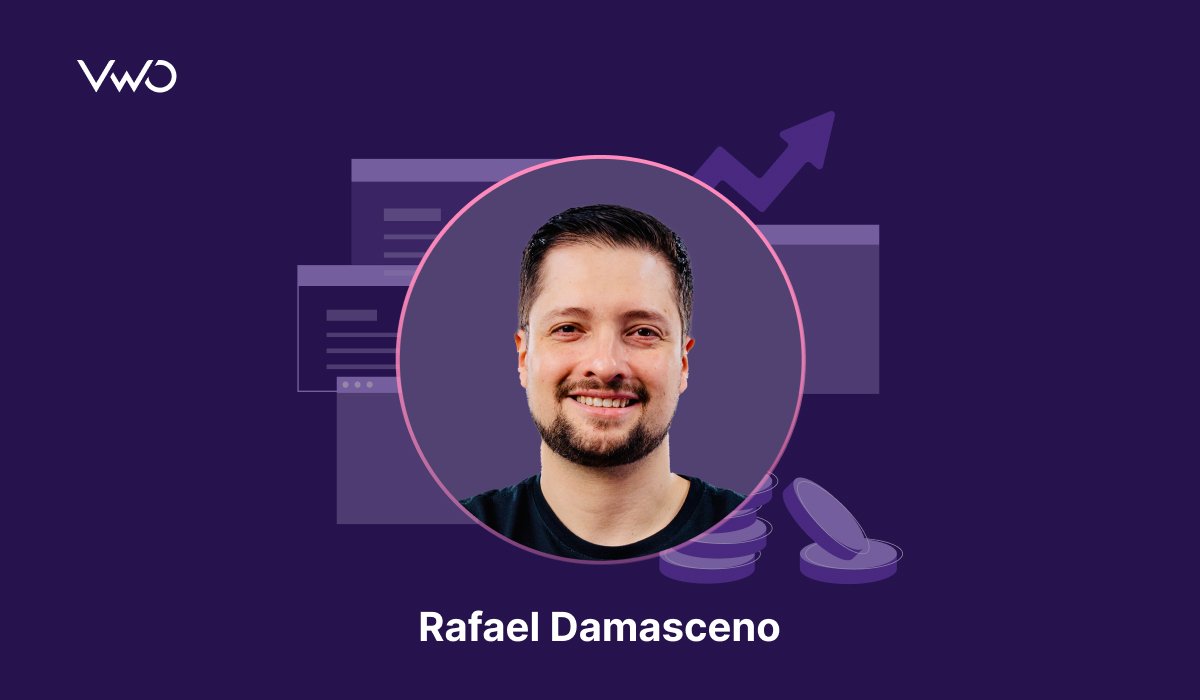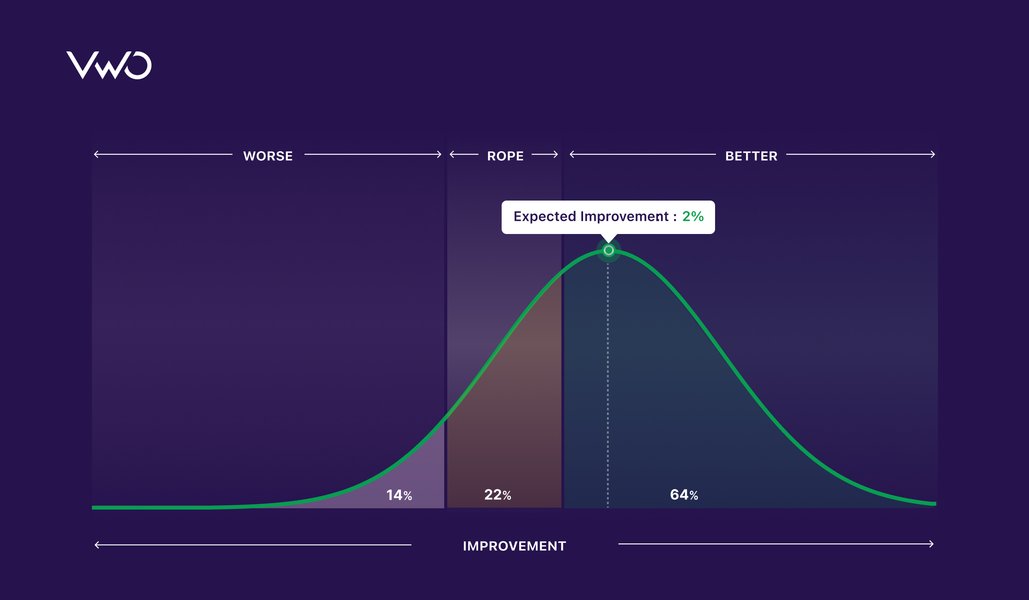Join us for the fifth post in ‘CRO Perspectives: Insights from Industry Thought-leaders’!
This series features the insights of top CRO professionals from around the world, building awareness around CRO and guiding businesses on how to start, where to focus, and what to do right. By learning from the best, you can navigate the complexities of CRO and achieve great business outcomes.
This month, we’re glad to feature Rafael Damasceno from Brazil. Rafael brings fresh perspectives on conversion rate optimization. Learn from his experiences to refine your strategies and drive impactful results.

Leader: Rafael Damasceno
Role: Director of Activation, BRIUS
Location: Brazil
Speaks about: Conversion Optimization • Web Analytics • Growth Marketing • User Experience (UX) • Leadership
Why should you read this interview?
With a rich background of over 15 years in digital marketing, Rafael has driven growth for companies across the USA, Brazil, Canada, and the UK.
Rafael is the co-founder of Supersonic, the pioneering Brazilian consultancy dedicated entirely to business growth via conversion rate optimization and A/B testing, which has grown into one of the world’s largest CRO consultancies.
Currently, he leads the Activation division at Brius Group, enhancing conversions and UX for a publisher reaching tens of millions of users annually in more than 20 countries.
Evolving approaches to experimentation over the years
Some 10 years ago I was way more focused on coming up with that perfect last word on that perfect headline. Or even that brilliant product screenshot + copy on the page’s 5th fold.
But experience gave me way more clarity on what really matters at the end of the day, in terms of growing businesses.
Now I don’t even mind not touching a page’s copy or UX during a test development. I will happily delegate that to a good copywriter/designer as long as it gives more time to:
- Think a lot about where in the user journey I should test to accelerate the business growth.
- Make sure that tracking is state-of-the-art, and that test reports are statistically reliable.
- Get leadership involved in experimentation so we can scale test volume and scope so it can become strategic.
Gain control over statistical parameters and improve your reporting with VWO’s new statistical engine. Benefit from detailed insights, enhanced visuals, and smart recommendations to disable underperforming variations for faster results.
Integrating testing into business strategy
Medium/large businesses can’t really benefit from experimentation if they don’t have real buy-in from leadership. Until that happens, marketers are usually limited to testing copy and UX on landing pages and similar scopes.
Scaling testing to other business areas, such as product features or pricing, will be challenging.
Indeed, you can get some exciting results just from that. But that won’t move the needle for a medium/large business.
More than 10 years of testing have shown me that the most reliable way to consistently win tests is to have a clear scientific process for doing so.

My suggestion to professionals or small teams getting started with experimentation at their companies is to do whatever they have to do to get senior leadership (C-Levels, ideally) excited and involved in experimentation.
How to do that is a long topic and it depends on each leader and company style. But some things that work often are:
- Share some early wins directly with leadership, even if it’s “just” a landing page conversion rate increment. Real work with real results will get WAY more attention than educational content. Make sure to explain how the process followed for that early win could impact the business goals if scaled. Actively ASK FOR HELP scaling experimentation to achieve that impact.
- There’s a reasonable chance you work in an industry where the leader is prominent in experimentation (travel = Booking, entertainment = Netflix, tech = Google, and so on). Demonstrate to leadership how experimentation is a core element of this competitor’s culture and all the benefits they get from it. Mentioning the competition is usually a very effective way to get leadership engagement.
- If leadership is focused on a specific challenge, like an OKR for the quarter, actively demonstrate how scaling experimentation will help achieve that goal.
Testing as a blend of data and creativity
I honestly think it should be at least 90% science and 10% (or less) art. Of course, it’s important to be “creative” to disrupt industries and all that.
But if you look objectively at what the majority of tests worldwide try to achieve, you’ll see they are trying to get incremental improvements on existing things.

For example:
The more qualitative and quantitative data you have showing you what needs to change on a page for its conversion rate to improve, the higher your chance of getting it right.
Or, the more backed-up by previous testing and research on the copywriting/UX techniques you use, the lower the chance of you making a mess.
Finally, the more rigorous your statistical approach to running and analyzing your experiment, the greater your chance of seeing the real impact of your change.
That’s all “science” in my opinion.
You can test brand-new products or a completely different pricing strategy, which might require a higher level of “art.” But it’s important to understand that these are bigger business changes that require much more than testing. In fact, you could argue that in these scenarios, testing is the final step to measure the impact of these changes.
Incorporating the customer’s voice in experimentation
You’ll frequently find many companies that don’t really care about customers, claiming that they are “customer-centric” in their useless values or mission documents.
Everyone wants to say they are customer-centric, but achieving that is hard and must be part of the core culture. That’s why leadership needs to be involved.

But the best way to get started is to:
- Make sure you are always collecting feedback from customers (post-purchase surveys, website polls, interviews, and so much more)
- Turn that raw data into actionable insights directly related to the business’s key objectives. NO ONE will ever read a full transcript of a user interview. Always deliver the insight in an objective and engaging way.
- Whenever possible, use the voice of the customer techniques to find answers to questions that are generating internal debate. This will help the company notice that users often have a clear answer to questions that are causing long, unproductive internal discussions.
If leadership doesn’t demand an experimentation mindset from all departments, very often the CRO team will be limited to gains in specific areas of the customer journey.
Solving challenges to improve business metrics
Sometimes, the solution to what is causing users to leave takes a lot of work to implement. You might need to totally change the technology behind the solution, completely reorganize your data, or fund a new team to handle a complex connection to an external solution.
Whenever we have recommendations like that to clients, the most important thing is to back them up with as much data as possible. Obviously, you’ll never be 100% sure it will work. But because there will be a considerable investment of resources, you have to do your homework and confirm from different data sources that this problem really exists and is costing serious money.
An additional benefit of backing the recommendation with as much data as possible is that it increases the chance of getting approval on the needed resources.
Another class of challenging problems is the cultural one. And it can come in many different forms.
Like a client who is afraid of offering a money-back guarantee. Or a client that is resistant to research showing customers completely disagree with them on a key business element like value proposition or positioning.
What tends to work in these cases is reminding the decision-maker that we agree that these changes can be risky. That’s why we are proposing an A/B Test, where we have full control over metrics, the number of users exposed to the change, and much more. We test it and if we don’t like what we see, we forget about it with minimal costs involved. But if it works, that could transform the business.
We can’t run away from facing challenging problems if we are serious about testing. If we diagnose a serious disease in a patient that requires risky surgery, we gotta handle that surgery and not waste time with simple medicine.
Enhancing CRO with VWO: Experiences and benefits
The main benefits I see from VWO are:
- It helps speed up experimentation programs from the very early beginnings. The friendly interface and some features make it easy to quickly start testing and sharing results to get engagement.
- The integrated user research features make it easier for anyone to generate data-backed hypotheses rather than random test ideas.
- It allows you to test on almost any kind of interface, making it easier for you to scale testing scopes without constantly changing tech partners.
Leverage VWO’s new AI feature to generate personalized testing ideas based on your goal for a webpage. Additionally, VWO Surveys uses AI to create relevant survey questions and summarize responses, saving you time and enhancing efficiency.
CRO awareness and maturity in Brazilian businesses
I’d say that the general awareness is much better in Brazil than what most people from other countries think. Brazil’s maturity is growing and it’s considerably ahead of most European countries, for example.
But of course, there’s still a lot to be done. My perception of what is happening right now is that product teams here are finally gaining more knowledge about experimentation. Most good product teams already understand its importance.

Unfortunately, most product teams are also making tragic mistakes in their approach to testing/experimentation. And very often, they don’t even notice that.
At the top of the funnel, marketing is improving, but we still see many ‘Growth’ teams confusing simple growth hacking activities with serious testing.
The biggest gap here is probably in statistical and test results analysis knowledge. But that is a problem in most of the US as well.
However, the future is bright as interest in the topic is growing, and the availability of decent content and consultancy in the area is slowly growing as well.
Common experimentation mistakes to avoid
- Hiring a single CRO person and expecting them to magically transform business revenue, CAC, and digital ROI.
- Running low-powered tests and believing the exaggerated results shown in test reports.
- Not having a reliable process for running tests, from hypothesis generation to test analysis.
We do often face scenarios where, for example, our point of contact might only have decision power over marketing landing pages but their real problems are on product onboarding or user retention. That’s one of the reasons why I said you can’t scale testing without leadership engagement.
Impact of AI and changing consumer behavior
AI will make it easier to do user research. But I don’t expect a huge transformation from it. Many businesses that struggle with user research do so not because it’s hard, but because they are not interested enough. AI will also help with personalization. Let’s see if real, scalable personalization will finally stop being “the future” as it has been for the last twenty years and finally become the present.
Conclusion
Hope you enjoyed reading the valuable answers shared by Rafael. Feel free to find inspiration and incorporate them into your CRO strategies. Stay tuned for another great interview coming soon.
Building on the insights Rafael provided, whether you want to use AI to speed up testing or create tests based on customer research, VWO offers a comprehensive platform with user behavior analytics and experimentation tools. This all-in-one platform helps you scale your optimization program, deliver exceptional user experiences, and enhance business metrics. Request a demo to see our team walk you through the platform’s exciting features and explain how it can achieve your testing goals.






















